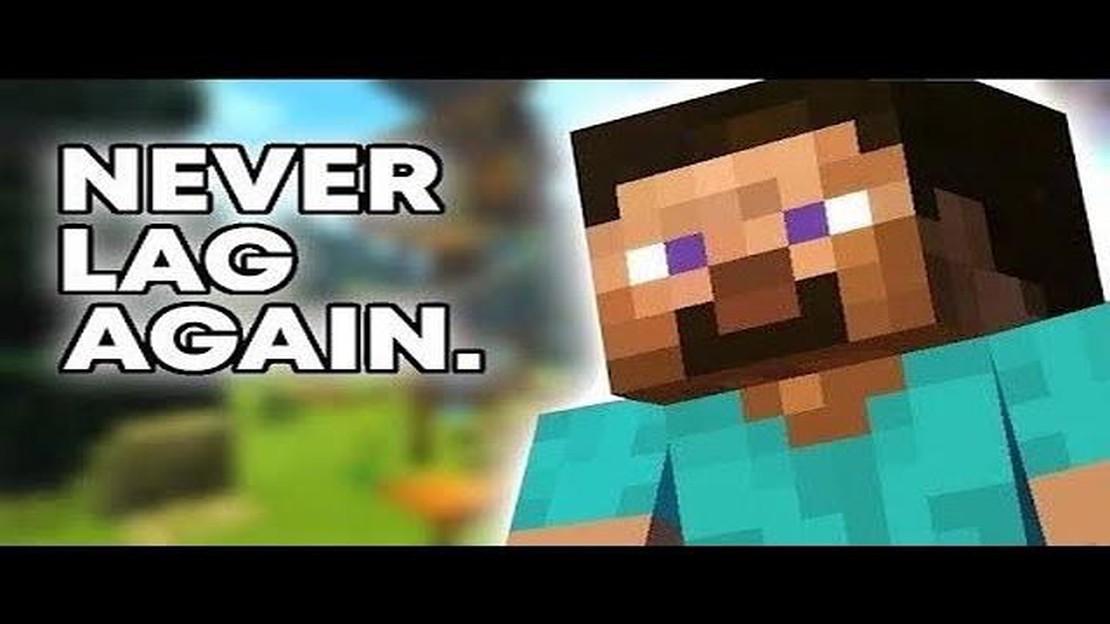Complete Guide to Finding and Unlocking All Nornir Chests in God of War
How to find and open every Nornir chest in God of War Welcome to our complete guide on finding and unlocking all Nornir chests in the critically …
Read Article
Minecraft, the popular sandbox game developed by Mojang Studios, offers players the opportunity to explore, build, and create in a virtual world. However, many players have experienced lag while playing the game, which can be frustrating and negatively impact the gameplay experience. Understanding the reasons behind Minecraft’s lag can help players troubleshoot and improve their gaming experience.
One of the main reasons why Minecraft may be laggy is the hardware requirements of the game. Minecraft is a resource-intensive game that requires a decent amount of processing power, memory, and a dedicated graphics card to run smoothly. If a player’s computer does not meet the minimum system requirements, it may struggle to handle the game’s demands, resulting in lag.
Another factor that can contribute to Minecraft lag is network latency. Minecraft is often played multiplayer, either on public servers or with friends, and the performance of the game can be affected by the player’s internet connection. High latency, which is the delay in the time it takes for data to travel between the player’s computer and the server, can lead to lag during gameplay.
Furthermore, Minecraft’s performance can also be impacted by the number of mods and plugins installed. Mods and plugins add new features and functionality to the game but can also increase its resource requirements. Having too many mods or plugins running simultaneously can overwhelm a player’s computer and cause lag.
In conclusion, Minecraft can be laggy for several reasons, including inadequate hardware, network latency, and the number of mods or plugins installed. By optimizing their hardware, improving their internet connection, and managing their mods and plugins, players can minimize lag and enjoy a smoother gameplay experience in Minecraft.
Minecraft is a popular sandbox video game that allows players to build and explore virtual worlds. However, many players experience lag while playing Minecraft, which can greatly affect their gameplay experience. There are several reasons why Minecraft may be laggy:
There are several steps you can take to reduce lag in Minecraft:
By addressing these factors and optimizing your system, you can significantly reduce lag and improve your Minecraft gameplay experience.
Read Also: Learn about the Clock Tower in Clash of Clans | Unveiling its features and strategies
Minecraft is a popular sandbox game that allows players to build and explore virtual worlds. However, many players experience lag while playing Minecraft, which can greatly impact their gameplay experience. There are several reasons behind Minecraft’s lag:
To improve your Minecraft performance and reduce lag, you can try several solutions:
By addressing these issues, you can significantly improve your Minecraft performance and enjoy a smoother gameplay experience.
Minecraft is a popular sandbox game that allows players to build and explore virtual worlds. However, players often experience lag and performance issues while playing Minecraft. These issues can be frustrating and can significantly affect the gameplay experience. In this article, we will discuss some of the common reasons behind Minecraft’s lag and performance issues.
Read Also: Black Friday 2022: Gaming Keyboard and Mouse Deals - More Clickety Clacks for Less
By addressing these common reasons behind Minecraft’s lag and performance issues, you can greatly enhance your gameplay experience. Experimenting with different settings and configurations can help you find the optimal setup for your computer and improve performance in Minecraft.
Lag in Minecraft can be caused by several factors, such as hardware issues, outdated software, high render distance, excessive entities or redstone mechanisms, and poor internet connection.
If your computer doesn’t meet the minimum system requirements to run Minecraft, it can result in lag. Insufficient RAM, slow CPU or GPU, or an old hard drive can all contribute to poor performance.
Yes, outdated software, including Minecraft itself, Java, or graphics drivers, can lead to lag. It’s important to keep all your software up to date to ensure optimal performance.
Render distance determines how far you can see in the game. Setting it too high can put a heavy load on your system, especially if you have a low-end computer. Lowering the render distance can significantly reduce lag.
Minecraft has to constantly process and render entities, such as mobs, animals, or dropped items. Having too many of them in close proximity can overload the game’s performance. Similarly, complex redstone contraptions with many components can also cause lag.
Yes, a slow or unstable internet connection can lead to lag while playing multiplayer or online servers. The game needs a stable connection to send and receive data in real-time.
How to find and open every Nornir chest in God of War Welcome to our complete guide on finding and unlocking all Nornir chests in the critically …
Read ArticleHow To Level Up In Clash Of Clans? How To Level Up In Clash Of Clans: Top Strategies and Tips Clash of Clans is a popular mobile game that involves …
Read ArticleWhat’s free on the Epic Games Store right now? The Epic Games Store has quickly become a popular destination for gamers looking for the latest titles, …
Read ArticleHow To Get Kaja Kaminari Skin On Mobile Legends? If you’re a Mobile Legends player and a fan of the hero Kaja, then you’re in luck! The Kaja Kaminari …
Read ArticleThings I wish I knew before playing Disco Elysium Disco Elysium is a critically acclaimed role-playing game that takes players on a gritty journey …
Read ArticleGenshin Impact Where To Find Dandelion Seed? In the popular video game Genshin Impact, Dandelion Seeds are a valuable resource that players can …
Read Article